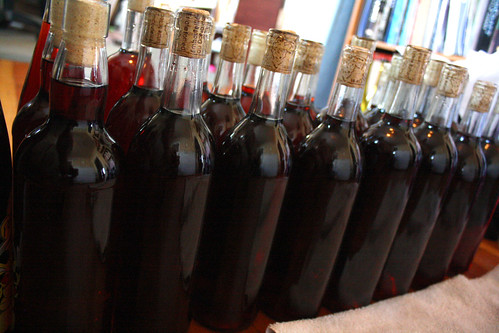Bottling is the final step in the wine making process that requires any effort on your part. After this time takes care of the rest.
The major considerations when bottling are what kind of bottle to use, type of closure, and to add gas or not
Bottles
The type of bottle you use is completely up to you. A bottle’s shape does not impact the taste or life of your wine in any way. Continue reading “Bottling Wine”


